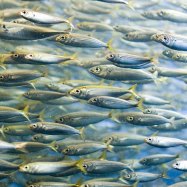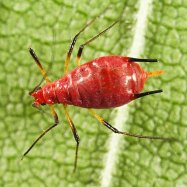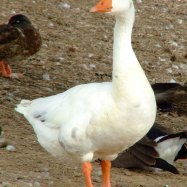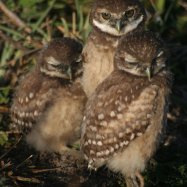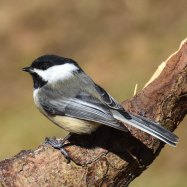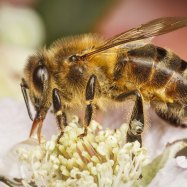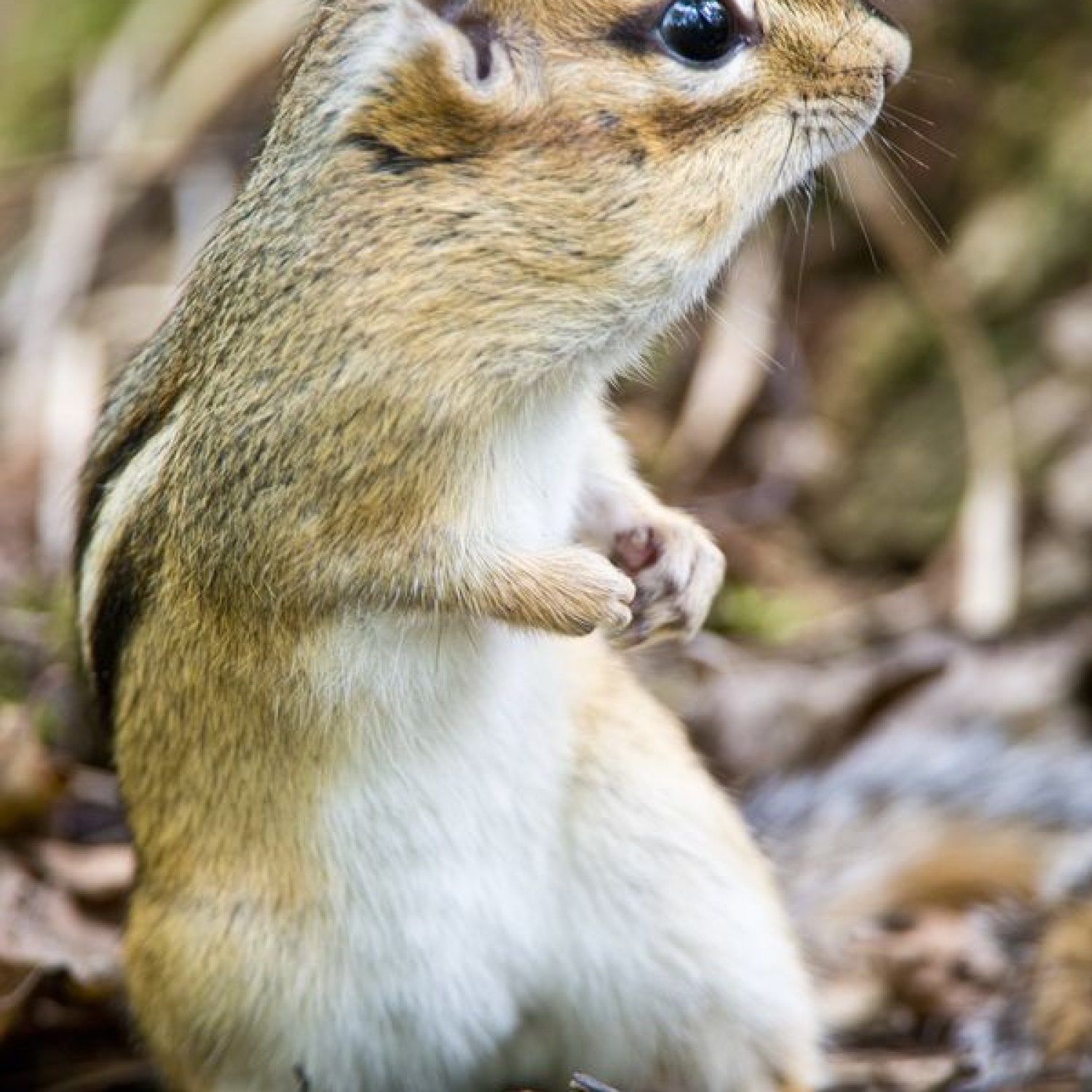
Chipmunk
7-10 inches
Did you know that Chipmunks are small, slender rodents with bushy tails? They can be found in various regions of North America and belong to the family Sciuridae. These cute and curious creatures measure 7-10 inches in length and are known for their love of nuts and seeds. #Chipmunk #NorthAmerica #Sciuridae #Rodent
Animal Details Summary:
Common Name: Chipmunk
Kingdom: Animalia
Habitat: Woodlands, forests, brushy areas
The Fascinating World of the Chipmunk: A Small But Mighty Creature
Deep in the forests and woodlands of North America, Asia, and Europe lives a tiny creature that often goes unnoticed by humans. But this small and mighty animal has captured the attention of researchers and nature enthusiasts alike. Say hello to the chipmunk, scientifically known as Tamias and commonly referred to as the chipmunk.The chipmunk belongs to the Animalia kingdom, making it a true animal in every sense of the word Chipmunk. It also falls under the phylum Chordata, the class Mammalia, and the order Rodentia. Within the rodent order, the chipmunk is a member of the Sciuridae family, along with other well-known creatures such as squirrels, prairie dogs, and marmots.
While there are 25 recognized species of chipmunks, they all share similar characteristics and can be found in various regions in North America (particularly the United States), Asia, and Europe. These small creatures are found in diverse habitats, including woodlands, forests, and brushy areas. But what makes the chipmunk truly stand out is its unique feeding method and body features.
Adapting to Survive: The Chipmunk's Omnivorous Diet
Despite their small size, chipmunks are known for their incredible adaptability. This is evident in their omnivorous diet. These creatures have a diverse appetite and are known to eat a wide range of foods, including nuts, seeds, fruits, berries, and even small insects, bird eggs, and carrion. This varied diet ensures that chipmunks have a steady source of food, no matter the season or location Cockroach.Their sharp teeth and strong jaws allow them to crack open nuts and seeds with ease, making them efficient gatherers and hoarders. This is especially important as chipmunks are small and need to store food for the winter when food is scarce. They have internal cheek pouches that allow them to carry large quantities of food and easily transport it to their underground burrows.
The chipmunk's ability to adapt and thrive in different environments is partly due to their clever foraging techniques and their efficient food storage system. This makes them a crucial part of the food chain in their habitats, as they help disperse seeds and play a vital role in maintaining a healthy ecosystem.
A Colorful Blend: The Chipmunk's Unique Coloration
If you've ever spotted a chipmunk scurrying around in the forests, you may have noticed their distinctive coloration. While they may seem similar to squirrels at first glance, chipmunks have a unique color pattern that sets them apart.Their fur is generally shades of brown, but what makes them stand out are the dark and light stripes running down their backs. These stripes are a mixture of black, white, and brown, creating a beautiful blend that acts as a form of camouflage in their natural habitat.
Each chipmunk species has its own unique stripe pattern, making it easier for researchers to identify and track them. This coloration also makes them less visible to predators, allowing them to blend into their surroundings and stay safe from harm.
A Small Package with a Big Personality: The Chipmunk's Body Shape and Size
The chipmunk is a small mammal, measuring between 7-10 inches in length and weighing only 1-5 ounces. But don't let their size fool you; these creatures are full of spunk and personality.Their small and slender bodies are perfectly adapted for life on the ground. They have short, sturdy legs that are well-suited for digging and climbing, making it easy for them to navigate through the forests and burrow into the ground.
One of their most striking features is their bushy tail, which is about half the length of their body. This tail not only adds to their overall cuteness but also helps with balance and acts as a signaling tool between individuals.
Rodent or Something More? The Unique Characteristics of the Chipmunk
At first glance, the chipmunk may seem like your typical rodent, but upon closer inspection, you'll discover some fascinating features that make them truly unique.One of the most interesting adaptations of the chipmunk is their internal cheek pouches. These pouches can expand to three times the size of their head, allowing them to store large amounts of food and carry it back to their burrows. This is a crucial survival tactic, especially during harsh winters when food is scarce.
Chipmunks also have specialized scent glands on their face and abdomen that they use to mark their territory and communicate with other chipmunks. This helps them establish dominance and avoid conflicts with other individuals.
Another remarkable characteristic of the chipmunk is their ability to enter a state of torpor. This is a deep sleep-like state that allows them to conserve energy and survive through long periods of cold weather or scarcity of food. During this time, they lower their body temperature and heart rate, only waking up periodically to eat and eliminate waste.
Conservation and Threats: The Battle for Survival
While chipmunks may seem abundant in certain areas, these creatures still face many threats in their natural habitats. Urbanization and deforestation continue to encroach on their territories, diminishing their food sources and disrupting their way of life.Pets such as cats and dogs also pose a significant threat to the chipmunk population. Domesticated animals can easily harm or even kill chipmunks, who are known to defend their territories and food sources fiercely.
In addition, climate change and pollution also take a toll on chipmunks and other wildlife, affecting their habitats and food sources. These challenges make it increasingly important to protect and conserve the chipmunk population.
But there is still hope for these small but mighty creatures. Due to their adaptability, they are thriving in certain areas, particularly in suburban and urban environments. This highlights the importance of creating and maintaining natural habitats, even in more developed areas.
Fascinating Creatures: The Chipmunk and Its Importance in Research
The chipmunk may seem like a simple, unassuming creature, but in the world of research, they play a vital role. These small mammals have been the subject of many studies due to their unique behavior, adaptability, and ability to thrive in different environments.One area of study that has garnered much attention is the chipmunk's auditory system. Researchers have found that chipmunks have an acute sense of hearing, which allows them to detect and locate danger. They are also known to warn others of potential threats through specific vocalizations.
Additionally, the chipmunk's role as a seed disperser also makes it a crucial subject of study. Their foraging and food storage habits have an important impact on seed germination and seedling survival, which ultimately affects the health of plant populations and the ecosystem.
The Future of the Chipmunk: Worthy of Our Attention
The chipmunk may not be the most talked-about or glamorous animal, but it is certainly a fascinating and important creature in the natural world. From their unique coloration and body features to their incredible adaptability and importance in research, chipmunks are worthy of our attention and protection.While their future may seem uncertain due to various threats, we can all play a role in safeguarding the chipmunk population. By preserving natural habitats and being mindful of how our actions affect the environment, we can help ensure a bright future for these small but mighty animals. So, next time you spot a chipmunk on your nature walk, take a moment to appreciate the wonders of this fascinating creature.

Chipmunk
Animal Details Chipmunk - Scientific Name: Tamias
- Category: Animals C
- Scientific Name: Tamias
- Common Name: Chipmunk
- Kingdom: Animalia
- Phylum: Chordata
- Class: Mammalia
- Order: Rodentia
- Family: Sciuridae
- Habitat: Woodlands, forests, brushy areas
- Feeding Method: Omnivorous
- Geographical Distribution: North America, Asia, Europe
- Country of Origin: United States
- Location: Various regions in North America
- Animal Coloration: Varies; generally brown with stripes on the back
- Body Shape: Small, slender body with a bushy tail
- Length: 7-10 inches
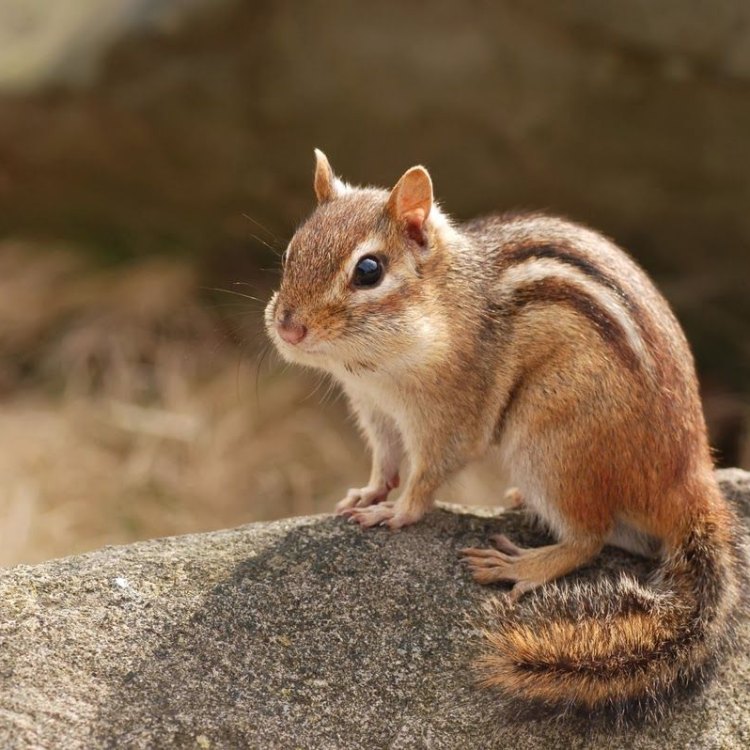
Chipmunk
- Adult Size: 5-6 inches tall at the shoulder
- Average Lifespan: 2-3 years in the wild
- Reproduction: Sexual
- Reproductive Behavior: Breeding occurs once or twice a year
- Sound or Call: Chirping, chattering, and rapid tick sound
- Migration Pattern: Non-migratory
- Social Groups: Solitary
- Behavior: Diurnal, active during the day
- Threats: Predation, habitat loss
- Conservation Status: Least Concern
- Impact on Ecosystem: Help in seed dispersal and plant regeneration
- Human Use: Some species kept as pets
- Distinctive Features: Cheeks pouches for storing food
- Interesting Facts: Can carry food in their cheek pouches up to three times the size of their head
- Predator: Birds of prey, snakes, weasels, foxes
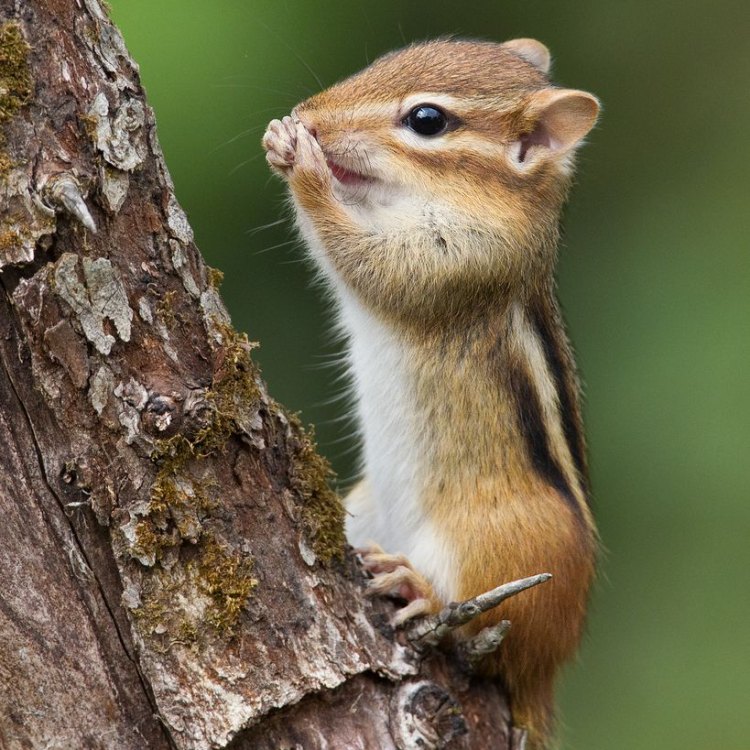
Tamias
The Fascinating Life of the Chipmunk: A Tiny Creature with Big Impacts
When we think of the animal kingdom, we often imagine majestic elephants, powerful lions, and graceful birds. But among these larger and more well-known creatures, there are also smaller and lesser-known species that are just as remarkable. One such creature is the chipmunk, a small mammal with a distinctive appearance and unique behaviors. Despite their diminutive size, chipmunks play a crucial role in their ecosystems and have fascinating traits that set them apart from other animals PeaceOfAnimals.Com. In this article, we'll delve into the world of the chipmunk and explore its interesting features, behavior, and impact on the environment.A Look at Their Physical Characteristics
Chipmunks are members of the squirrel family, and there are 25 different species found across North America, Europe, and Asia. The most common species is the Eastern chipmunk, found in the eastern regions of North America. These small mammals measure just 5-6 inches tall at the shoulder, making them one of the smallest members of the squirrel family.One of the most distinctive features of the chipmunk is its cheeks pouches. These pouches, located inside the chipmunk's mouth, can stretch to three times the size of their head and are used to store food. This allows them to gather and transport large amounts of food at once, making it easier for them to survive during the winter months when food is scarce.
In terms of appearance, chipmunks have a brownish-red fur coat with black and white stripes on their back and sides. This coloration serves as camouflage, helping them to blend in with their surroundings and avoid predators Carpet Beetle. They also have sharp claws and teeth, which they use to help with foraging and digging.
The Life of a Chipmunk
Chipmunks have a relatively short lifespan of 2-3 years in the wild, with some species living up to 5 years in captivity. They are solitary creatures, meaning they prefer to live alone rather than in groups. However, they do establish small territories and will defend them against other chipmunks. These territories are usually around 1/10th of an acre and include a network of tunnels and burrows that they use for shelter and storing food.Reproduction in chipmunks is sexual, with breeding occurring once or twice a year. Mating takes place in the spring, and after a gestation period of 31 days, the female gives birth to a litter of 2-8 babies. These babies, called kits or pups, are born blind and hairless and stay with their mother for about 6-8 weeks until they are ready to leave the burrow and fend for themselves.
One interesting reproductive behavior of the chipmunk is that they can delay the implantation of their fertilized egg for several months if environmental conditions are not favorable for raising young. This is one way they ensure the survival of their offspring, as they only give birth when food and weather conditions are optimal.
The Chipmunk's Daily Routine
Unlike their nocturnal cousins, the chipmunk is diurnal, meaning they are active during the day. They spend an average of 7-8 hours foraging and collecting food, mainly seeds, nuts, and berries. Their cheek pouches play a crucial role during this time, allowing them to gather and store large amounts of food to sustain them during the colder months.Apart from gathering and storing food, chipmunks also engage in other activities such as grooming, playing, and socializing with other chipmunks in their territory. They are very vocal animals, communicating with each other through a variety of sounds and calls. These include chirping, chattering, and a rapid tick sound that is often associated with their name.
Non-Migratory Creatures
Unlike many other animals, chipmunks are non-migratory, meaning they do not move from one location to another according to the seasons. They are well-adapted to their surroundings and have everything they need within their territory. However, during the winter months, they do enter a state of torpor, which is a deep sleep-like state that slows down their metabolism and conserves energy until food becomes more plentiful in the spring.Threats and Conservation
The biggest threat to chipmunks is predation, especially from birds of prey, snakes, weasels, and foxes. These animals are natural predators of chipmunks, and their numbers can severely impact the population of these small mammals. Habitat loss is another major threat, as urbanization and logging have led to a decline in their natural habitats.Thankfully, the conservation status of most chipmunk species is currently rated as Least Concern by the International Union for Conservation of Nature (IUCN). This means that they are not facing any imminent threats of extinction. However, continued efforts are needed to protect their habitats and prevent further decline in their population.
The Impact of Chipmunks on the Environment
Despite their small size, chipmunks play a vital role in their ecosystems. One of their most significant contributions comes from their role in seed dispersal and plant regeneration. As they gather and store large amounts of seeds, they also happen to drop some along the way, helping to spread and diversify plant species in their surroundings.Moreover, chipmunks are also prey and a food source for many other animals, including birds of prey, weasels, and foxes. This helps to maintain a balance in the food chain and keep these ecosystems in check.
Human Interaction with Chipmunks
Some chipmunk species, particularly the eastern chipmunk, are kept as pets. However, it's essential to note that they are wild animals and should not be taken from their natural habitats. Keeping them as pets requires specialized care and a thorough understanding of their behavior and needs. They are also not recommended as pets for young children, as they have sharp claws and teeth and can become aggressive when handled.Interesting Facts about Chipmunks
Apart from their distinctive cheek pouches, there are several other interesting facts about chipmunks that make them unique creatures. For starters, they can carry food in their cheek pouches up to three times the size of their head, an incredible feat for such tiny animals.Another fun fact about chipmunks is that they are excellent climbers and can scale trees and fences with ease. They have sharp claws that help them grip onto surfaces and move quickly. They are also agile and can change direction quickly, making them difficult to catch for predators.
Closing Thoughts
In conclusion, the life of a chipmunk is filled with fascinating features and behaviors. These small, solitary creatures may not be as well-known as other animals, but they certainly make a big impact on their ecosystems. Their role in seed dispersal, their resilience and adaptation to their surroundings, and their unique physical characteristics make them worthy of our admiration and protection. So the next time you spot a chipmunk in your backyard, take a moment to observe and appreciate these tiny yet mighty creatures.
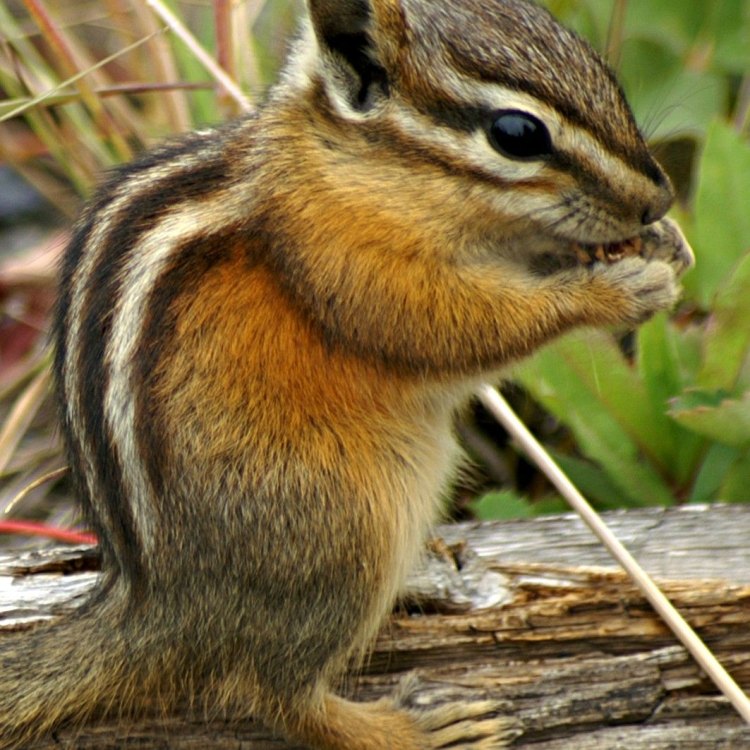
The Fascinating World of the Chipmunk: A Small But Mighty Creature
Disclaimer: The content provided is for informational purposes only. We cannot guarantee the accuracy of the information on this page 100%. All information provided here may change without prior notice.



